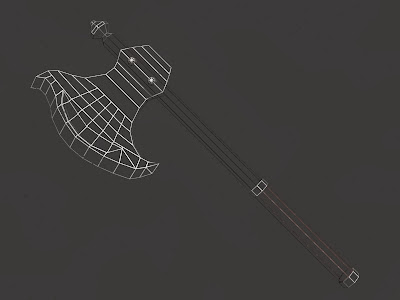A lot can happen in a
short amount of time. Although the 80s holds some very well-known and
successful products in the game industry, it is also known for the fall.
 In terms of successful
games at the beginning of the decade, Namco released Pac-Man in 1980, while Nintendo released Donkey Kong in 1981 which was also widely successful. Shortly after
in 1982, Midway released Ms. Pac-Man,
which became the biggest arcade game in American history. The original designer
of Pac-Man was not involved in the
creation of the game, instead it was designed by nine university students. It
was an improvement on the previous best-selling game, with faster movement,
more mazes, and more challenging ghosts. Over 100,000 Pac-Man and over 150,000 Ms.
Pac-Man machines were sold - more than any other arcade game.
In terms of successful
games at the beginning of the decade, Namco released Pac-Man in 1980, while Nintendo released Donkey Kong in 1981 which was also widely successful. Shortly after
in 1982, Midway released Ms. Pac-Man,
which became the biggest arcade game in American history. The original designer
of Pac-Man was not involved in the
creation of the game, instead it was designed by nine university students. It
was an improvement on the previous best-selling game, with faster movement,
more mazes, and more challenging ghosts. Over 100,000 Pac-Man and over 150,000 Ms.
Pac-Man machines were sold - more than any other arcade game.
At a similar time, the
Commodore 64 was released - an 8-bit home computer with a slot for game
cartridges as well as a separate floppy disk drive that could hold more data.
This attracted many new games companies to the market, probably the most
successful being Electronic Arts.
However it wasn't all
sunshine and sales in the game industry. Firstly, a connection between gaming
and truancy began to emerge into the public eye. Governments called for
restrictions on minors being allowed to play arcade games, due to the sheer
popularity and amount of time people spent playing on them. But more notably,
in 1982 Atari released an ET game,
based off Steven Spielberg's blockbuster movie, for the VCS. Although the
leaders were confident it would sell well, the manufacturers were unhappy with
it, especially considering the incredibly short amount of time they were given
to create the game. In the end, due to its disappointing play and basic
graphics, the game was a bust and millions of worthless game cartridges were
dumped by the company. Despite the crash for Atari in America, its international market kept fairly
steady in Europe and Japan.
 Another important moment
in the 80s is the invention of Tetris,
designed by Soviet Russion mathematician Alexey Pajitnov is 1985. I don't think
it needs saying how successful that particular game was..
Another important moment
in the 80s is the invention of Tetris,
designed by Soviet Russion mathematician Alexey Pajitnov is 1985. I don't think
it needs saying how successful that particular game was..
Meanwhile Nintendo kept on
ploughing through time, releasing the Famicon in Japan in 1984 (which was a big
improvement on previous video computer systems), and it's American version -
the Nintendo Entertainment System in 1986. At the same time, Sega released
Master System and Atari made a comeback with the 7800 game console, leaving the
trio of new releases to battle it out in the market.
Then in 1987 Nintendo did
it again, this time releasing The Legend
of Zelda. After its success in Japan, there was concern of it
appealing to American audiences - the game had a much more complex story line
than previous games, and involved boxes of text. However their worries were of
no need, to the dismay of my tutors who are convinced that the game ruined game
art forever.
 Nearing the end of the
80s, consoles were beginning to fade away as PC games became more popular,
notably with the release of Wolfenstein 3D. However, computers were not all the
rage since Nintendo's release of the Game Boy in 1989 witnessed immediate
success, and its sales did not slow down even after superior products were being
created and released. In fact, its sales were so high and steady that the
product was only discontinued in 2003.
Nearing the end of the
80s, consoles were beginning to fade away as PC games became more popular,
notably with the release of Wolfenstein 3D. However, computers were not all the
rage since Nintendo's release of the Game Boy in 1989 witnessed immediate
success, and its sales did not slow down even after superior products were being
created and released. In fact, its sales were so high and steady that the
product was only discontinued in 2003.
So, into the 90s. It is
around this time where I start recognising games from my own childhood...
References:
Kent, S L. 2001. The Ultimate History of Video Games. Prima Publishing.
Image References:
donhodges.com, giantbomb.com,















































